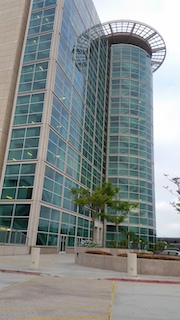The following article covers only a portion of those motions that one ought to consider filing before trial and excludes motions in limine, which are a complex subject better covered separately.
About This Article Briefly: Generally speaking, before trial one must consider certain motions to limit or allow in critical evidence that can sway a jury. Besides the Faretta and Wheeler motions discussed below, the other four motions deal with critical testimony that a judge can allow or prevent from being introduced and should be considered by trial counsel.
Nonetheless, this article covers six motions that are common, but also often overlooked, often with damaging consequences.
1. Motion to Admit Prior Convictions for Crimes of Moral Turpitude to Impeach Witness Credibility. This motion asks the judge to exercise his or her discretion under Evidence Code § 352 to admit such convictions to let the jury hear about prior conduct that could affect the credibility of the witness.
People v. Castro (1985) 38 Cal.3d 301. In a way, this can be seen as a motion in limine in reverse, or proactive opposition to a motion in limine by the opposing party.
2. Motion to Bar the Prosecutor from Commenting Upon an Accused's Invocation of Fifth Amendment Rights. This motion is based on the concept that under the Fifth Amendment of the federal Constitution, a prosecutor is barred from commenting directly or indirectly upon an accused's invocation of the constitutional right to silence.
People v. Tafoya (2007) 42 Cal.4th 147, citing to
Griffin v. California (1965) 380 U.S. 609.
 Airport Courthouse
Airport Courthouse
3. Aranda, aka Burton Motion. This is a motion to bar the prosecution, where applicable, from introducing a co-defendant’s statement in a joint trial on confrontation grounds, or in the alternative, to sever the defendant’s trial from his co-defendant’s trial.
People v. Aranda (1965) 63 Cal.2d 518;
Bruton v. United States (1968) 391 U.S. 123; see also
People v. Arceo (2011) 195 Cal.App.4th 556 (analyzing issue within the framework of
Crawford v. Washington (2004) 541 U.S. 36, perhaps the foremost case on the Sixth Amendment confrontation right).
4. Kelly-Frye Motion. This is a motion dealing with scientific evidence or a new scientific technique that may be unreliable. In this regard, the motion asks the judge to order such evidence inadmissible until reliability of the scientific method or expertise of the interpreting witness are established (OK, this is a motion in limine!).
People v. Kelly (1976) 17 Cal.3d 24;
Frye v. United States (DC Cir. 1923) 293 F. 1013. Federal courts, it should be noted, apply a different test. See
Daubert v. Merrell Dow Pharmaceuticals (1993) 509 U.S. 579.
5. Faretta Motion. This is a motion by a defendant to represent himself or herself and act as his or her own lawyer. Judges are reluctant to grant such motions, which are common, because the self-represented person is often not trained in evidence, criminal procedure and may not have the experience needed to make good decisions quickly or anticipate how the trial proceeds.
Faretta v. California (1975) 422 U.S. 806.
6. Wheeler Motion. This is a motion requesting a new trial by alleging that opposing counsel’s exercise of peremptory challenges was to exclude members of a cognizable group in either a criminal or civil trial. It most commonly alleges that African American jurors are excluded based on their skin color and perceived sympathy for defendant or bias against police officers when this is an issue in trial. This motion can be made by the defense or the prosecution, although it is most commonly made by the defense.
People v. Wheeler (1978) 22 Cal.3d 258; see also
Batson v. Kentucky (1986) 476 U.S. 79. In our experience, this motion usually is denied because the prosecution, if accused of racially motivated juror exclusions, need only explain any other basis for excusing such jurors. When we see such a motion being filed, we often are curious to see if it will be granted, as so few are.
For more information about trial issues, please click on the following articles:
- Should I Waive a Jury Trial and Instead Have a Bench Trial?
- Sex Crime- Defendant Has Right at Trial to Present Evidence of Alleged Victim’s Prior False Sexual Assault Claims
- Beware: Prosecution May Add Charges During Trial Based on Witness Testimony in Trial
Contact us.
 Airport Courthouse
Airport Courthouse